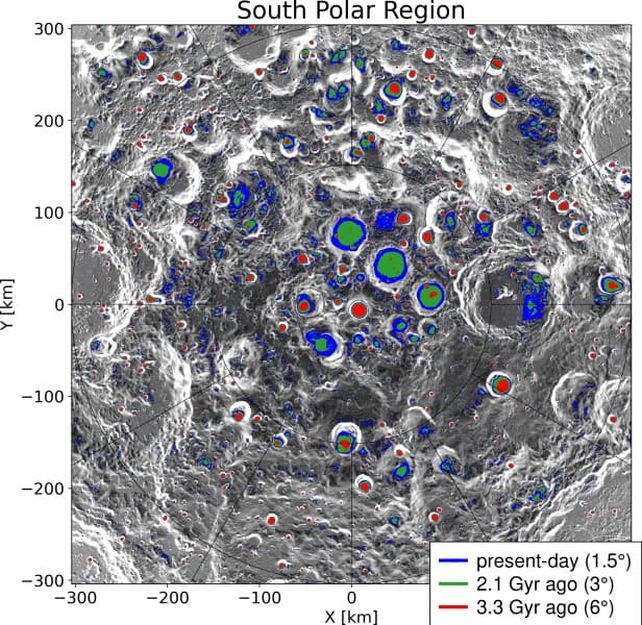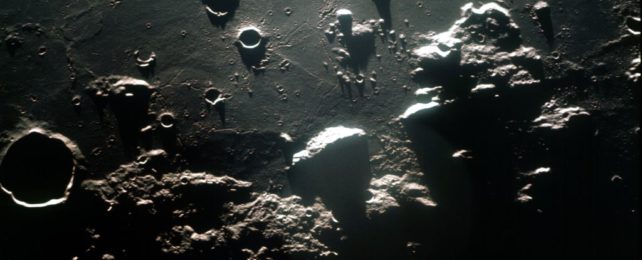We may have to rethink our plans for tapping into reserves of water on the Moon.
According to a new analysis of lunar craters, these pocks and divots that mar and characterize the lunar surface are too young for the long-term retention of ancient reservoirs of water ice.
In fact, most of the craters that contain permanent pockets of shadow – a major focus for future Moon exploration – are younger than 2.2 billion years, according to physicist Norbert Schörghofer of the Planetary Science Institute in the US and astrophysicist Raluca Rufu of the Southwest Research Institute in the US.
"These findings change the prediction for where we would expect to find water ice on the Moon, and it dramatically changes estimates for how much water ice there is on the Moon," Schörghofer explains. "Ancient water ice reservoirs are no longer expected."
Now, we know that there's water on the Moon. That's not really in question. What we want to know is how much water is up there, and where it's hiding. And in recent years, scientists have been increasingly looking towards permanently shadowed regions, or PSRs, such as deep craters.
In other regions, sunlight could warm and lead the water to evaporate, but in the cold traps of PSRs, where temperatures barely exceed -163 degrees Celsius (-260 degrees Fahrenheit) it was thought ice can remain – and accumulate, potentially over billions of years. Estimates have suggested that these craters can contain patches of water ice up to several meters in thickness.
However, these upper estimates require an accumulation over billions of years. And it seems that the PSRs have not been shielded from the Sun for long enough for that accumulation.
The discovery follows a paper published a year ago, in which a team of researchers sought to resolve a discrepancy between the rate at which the Moon is moving away from Earth (3.8 centimeters, or 1.5 inches, per year) and the age of the Moon (4.5 billion years). Put simply, the two figures are not compatible.

That team found that resonance between Earth and the Moon would have produced variations in the lunar recession rate. This model also accounted for changes in orientation of the lunar axis.
"When I heard about their result, I immediately realized it has profound implications for the search for water ice on the Moon," Schörghofer says. "I dropped everything I was doing and began to work out the specifics, with the help of my co-author Raluca Rufu."
Early in the history of the Solar System, before about 3.8 billion years ago, scientists think the inner Solar System was bombarded with comets and asteroids. Mercury, Venus, Earth, and Mars were all slammed in this Late Heavy Bombardment. And, of course, the Moon would have been too.
This, and volcanism in a Moon that was still hot and squishy after forming, would have released water from the interior of the Moon. If the PSRs were hanging around then, they could have snared a whole bunch of it.
However, based on the most recent models of the reorientation of the Moon's spin-axis and the evolution of the Earth-Moon distance, the PSRs are much more recent. This means any ice therein must be more recent too, the researchers say.
"We have been able to quantify how young the lunar PSRs really are," says Schörghofer. "The average age of PSRs is 1.8 billion years, at most. There are no ancient reservoirs of water ice on the Moon."
This has pretty important implications for lunar missions. NASA's crewed Artemis III mission is selecting landing sites partially based on the proximity of PSRs. But, in a way, the finding could be good news. We've already found evidence for water ice in PSRs.
Now, scientists know that older PSRs could potentially contain more water than younger ones.
Working out which craters are older will help narrow down landing sites for future crewed and uncrewed missions, the researchers say.
Their findings have been published in Science Advances.
